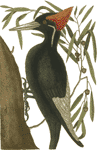Natural Resources, School of

School of Natural Resources: Faculty Publications
Document Type
Article
Date of this Version
1995
Citation
Annals of the Association of American Geographers, 85(2), 1995, pp. 339-355
Abstract
Research on global change has been hindered by deficiencies in the availability Wand quality of land-cover data (Mather and Sdasyuk 1991; Townshend 1992). To address this deficiency, the U.S. Geological Survey (USGS) and the University of Nebraska- Lincoln have collaborated in developing a method of land-cover characterization that is suitable for research on global change and on regional patterns of land cover (Loveland et al. 1991; Brown et al. 1993). This methodology is based upon statistical analysis of multidate, meteorological satellite imagery acquired by the National Oceanic and Atmospheric Administration's (NOAA) Advanced Very High Reso- lution Radiometer (AVHRR) sensor complemented by ancillary spatial data. The product of this analysis-a multi-level, digital, geographically referenced land-cover database (hereafter referred to as the database) covering the coterminous United States-serves as a prototype for a global land-cover database which is currently under development. The study of global change requires improved regional frameworks (for example, Turner, Moss, and Skole 1993; Mather and Sdasyuk 1991). The land-cover characterization strategy developed in this study is based upon regionalization of the seasonal expression of vegetative development. This approach is well-suited for global-change research because of the explicit manner in which critical biophysical conditions are used to define and characterize land-cover regions. Moreover, the regionalization process presented here has the advantages of replicability, computational manageability, flexibility, and global applicability.
Included in
Natural Resources and Conservation Commons, Natural Resources Management and Policy Commons, Other Environmental Sciences Commons


Comments
Copyright 1995 by Association of American Geographers. Used by permission.